The 2nd
LaureatePainting
Antoni Tàpies
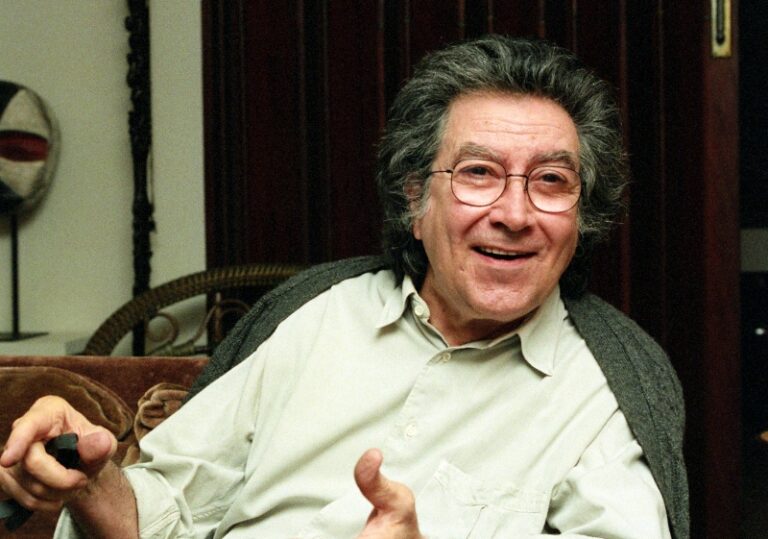
The heavily encrusted,earth-coloured works of Antoni Tàpies are a kind of assemblage,somewhere between painting and sculpture. Objects are sometimes stuck to the canvas,sometimes impressed in thickly applied cement on the picture’s surface – Tàpies’ works are always more about material than depiction. The surface becomes like a section of decaying wall or an old door,reminiscent of those in his native Catalonia. The work seems to be influenced directly by Dubuffet and Joan Miró,but it is Tàpies’ roots in Catalan history – in medieval fresco paintings,for example – which give meaning to his work through symbol and sign. Throughout his work he brings the reality of material into contact with the world of the timeless and sacred.
Biography
If Spain produced several of the most original and powerful artists of the twentieth century,it is also a fact that many of them have been Catalans,natives often of Barcelona or at least centred on Barcelona – the last city to surrender to Franco’s fascist forces and always hated by the Generalissimo. Tàpies witnessed the city’s bombardment in 1936 and severe illness four years later imposed two years of convalescence and intense reading and thinking. His father was a lawyer and Tàpies followed him in studying law during 1943–46 whilst also attending drawing classes and setting up his first studio. His first known works show his awareness of modern French art but also an urge to incorporate non-art materials in strong,primitive imagery.
By 1948 he had become a leading artist in Barcelona and was winning prizes. In 1950 he had his first solo exhibition and was given a French scholarship that took him to Paris for a year. This and subsequent visits confirmed his interest in surrealism but then led him to a more existentialist view of art as self-defining action,under the influence of Sartre’s writings and the art of Fautrier and Dubuffet. By 1953 he had turned to making abstract paintings,using emphatically thick,textured paint. Black,light and dark browns,and white and cream with occasional elements of red and gold characterise the work that follows and are easily associated with Spain and with symbols of suffering and death. More important is the way that his feeling for surfaces and textures led him into realising his paintings more and more in the character of walls: ‘tàpies’ is Catalan for walls. These walls appear to be ordinary old walls one might find on the outskirts of towns and in villages; walls that have witnessed much and been intentionally and unintentionally marked by life. They assert weight and thickness,but they do not make space; illusionism,well exploited in some forms of surrealist art,is absent. The painting is a finite surface,given presence by matter and at times specific meaning by signs and inscriptions. In 1953 Tàpies had exhibitions in Chicago,Madrid and New York,showed at the São Paolo Bienal and was awarded a prize there. In 1956 Michel Tapié,the champion of informal abstraction,arranged and introduced an exhibition of his ‘complete works’ in Paris. In 1958 Tàpies showed in the Spanish Pavilion at the Venice Biennale. In 1960 the New York critic Frank O’Hara hailed him as an eminent avantgardist. In 1962 there were Tàpies retrospectives in New York and in Hanover.
Imbued with the spirit of Catalonia and in close touch with Catalan literature from medieval times to the present,Tàpies was both reflecting on and clearing away the moral and physical debris among which he had grown up. He was working with remarkable freedom yet with noticeable detachment from the often nostalgic taste of his time. He heaped his materials – typically a heavy mixture of marble dust and varnish,as well as paint thickened with cement – on to strong canvases and scored-in or brushed marks on these,or left in them impressions of familiar objects such as a dish (1962) or a walking stick (1966),at times also appropriating ready-made surfaces such as a metal roller blind to which he attached a violin (1956). That his roots were evidently in the Catalan past – in medieval fresco paintings,for example – as well as in the present realities,gave his art a particular presence in the international art world of the time,a social voice amid the seemingly self-indulgent pursuits of abstract expressionism and its European counterparts,and a weight and time-transcending seriousness amid the dance pop art was leading consumerism and vice-versa. This brought out a magical quality of which the sixties and subsequent decades have otherwise been short: the artist as conjurer but also as shaman,working his spells to reveal things that always were and that the world is reluctant to accept. In the seventies Tàpies’ work became noisier and more theatrical when he turned to making sculptures – often disquieting and discordant assemblages of out-of-service furniture and rubbish,a desk heaped with straw (1970),a broken cupboard spilling out its unwanted clothes (1973).
Tàpies’ fame has grown with a rapid succession of solo exhibitions travelling around the world. The Tàpies Foundation in Barcelona displays his own art,but also presents major exhibitions of the work of other artists,and includes a research library. To this day Tàpies continues to make paintings,drawings and prints as well as sculptures – always bringing the reality of his materials and references close to the world of the timeless and sacred.
Norbert Lynton
Chronology
-
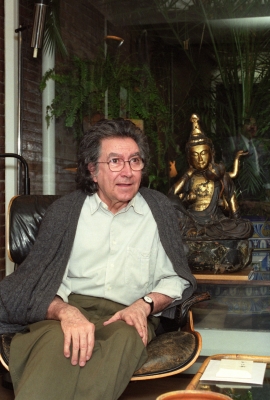
At his home
-
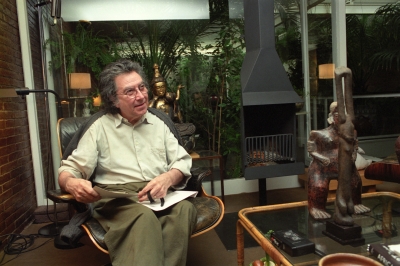
At his home
-
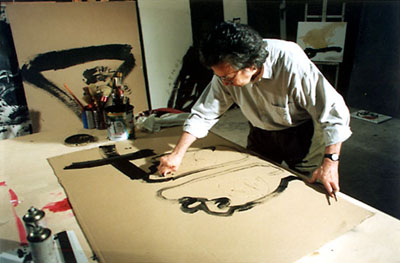
In his studio
-
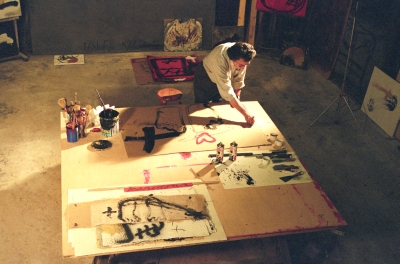
In his studio
-
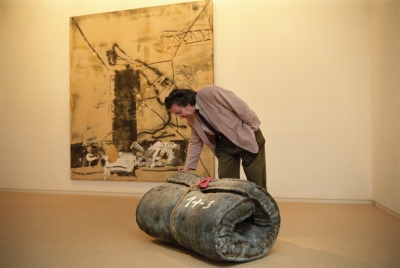
In his studio

